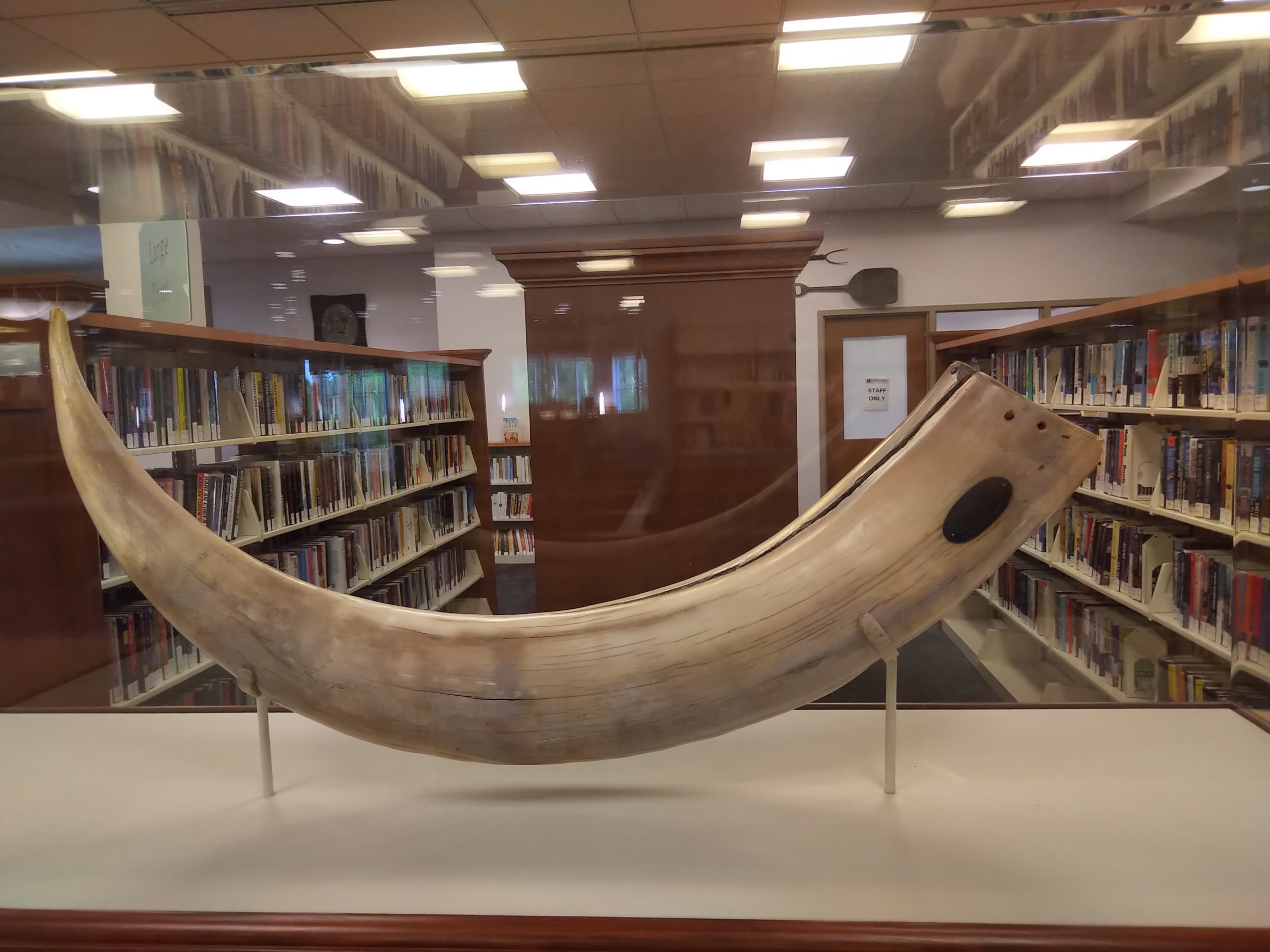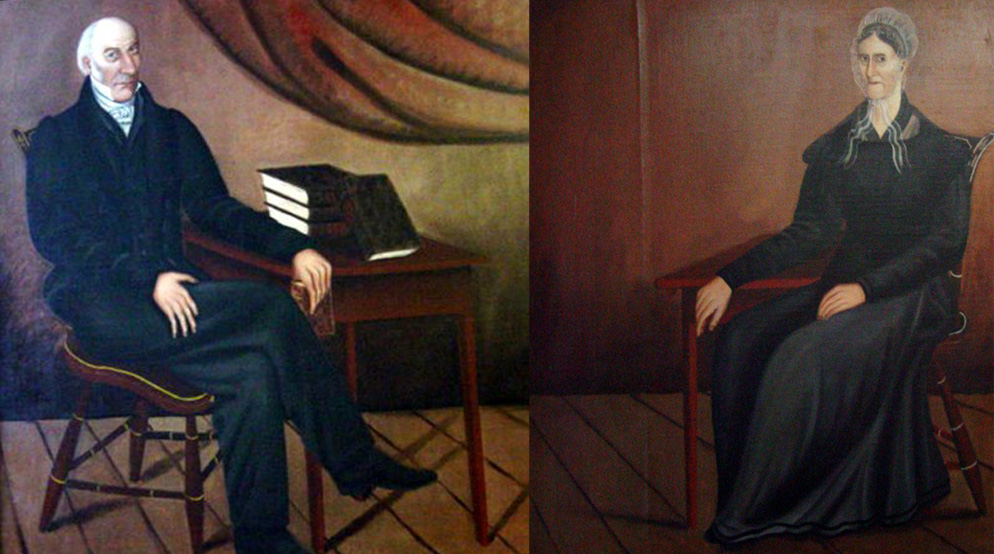OBJECT DETAILS
Type: Land Transportation — Accessory
Date created: First half 19th c.
Physical Dimensions: 28″ x 13″ x 11″
Object number: A.125.00.336
Building location: On display on the second floor of the Hudson Library
The saddlebags received conservation treatment at the ICA – Art Conservation (ICA) in 2020, thanks to a grant from the Federal Institute of Museum and Library Services (IMLS) awarded by the State Library of Ohio.
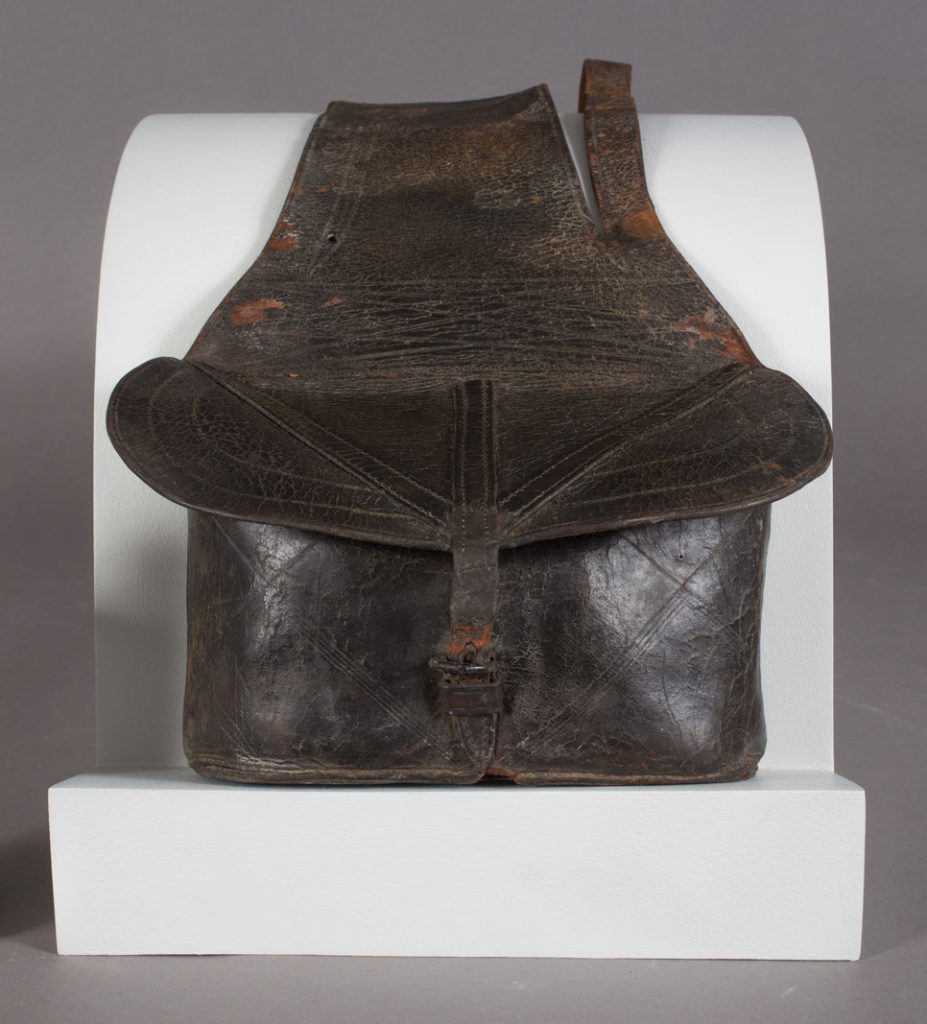 The historical society’s collection includes a leather doctor’s saddlebag belonging to Dr. Moses Thompson, the first physician in the Western Reserve. Early pioneer physicians, like Dr. Thompson, were the only source of medical care of the Western Reserve and were often considered the most valuable asset in their community. Navigating the area on horseback, Dr. Thompson brought with him a portable apothecary and medical equipment.
The historical society’s collection includes a leather doctor’s saddlebag belonging to Dr. Moses Thompson, the first physician in the Western Reserve. Early pioneer physicians, like Dr. Thompson, were the only source of medical care of the Western Reserve and were often considered the most valuable asset in their community. Navigating the area on horseback, Dr. Thompson brought with him a portable apothecary and medical equipment.
Instruments and drugs of early pioneer medicine varied widely based on the doctor’s own training and access to supplies. Contents of the glass vials in Dr. Thompson’s saddlebags are unknown, except for one labeled “belladonna.” Belladonna (Atropa belladonna), also known as deadly nightshade, was an herb used in early medicine for a variety of ailments. Ohio pioneer doctors were known to source drugs and other supplies in Pittsburgh as well as use many herbs and medicines indigenous to Ohio. Drugs as ipecac, calomel, borax, arsenic, camphor, ammonium hydroxide, laudanum and salts, were common to pioneer doctors of this area.
Based on the inventory of saddlebags of other Ohio pioneer doctors of this time, it is likely that in addition to drugs, Thompson’s saddlebags also contained catheters, lancets, syringes and dental instruments like a turnkey (or dental key) used to extract teeth. A story survives that Thompson once rode twenty-five miles to Cleveland on a stormy night just to perform a tooth extraction.
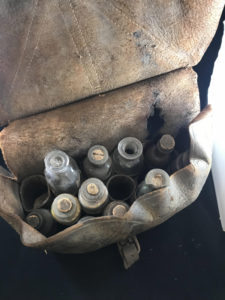 The saddlebags included eleven small glass medicinal bottles containing residues of compounds. One bottle is labeled “belladonna,” an herb used in early medicine for a variety of ailments.
The saddlebags included eleven small glass medicinal bottles containing residues of compounds. One bottle is labeled “belladonna,” an herb used in early medicine for a variety of ailments.
Contents of the other glass vials are unknown. Drugs such as ipecac, calomel, borax, arsenic, camphor, ammonium hydroxide, laudanum and salts were common to pioneer doctors of this area.
“Over blazed trails and across unbridged streams on horse-back, carrying his instruments and drugs in saddle bags, Dr. Thompson rode a circuit from one settlement to the next, sometimes being away from home for a week. He was reputed by both laity and the profession to be a good physician. On one occasion, in later years, a prominent physician of Cleveland was asked to take a case in Hudson. He sent back the laconic reply, ‘Why call me when you have Dr. Moses Thompson in your own town.’”
–Frederick C. Waite, “Moses Thompson-----Pioneer Physician"
Dr. Moses Thompson
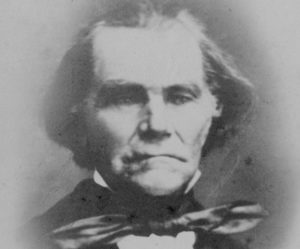 DR. MOSES THOMPSON (1776-1858) was the first doctor in the Western Reserve. Born in Goshen, Connecticut, at age 17, he began a four-year apprenticeship under several prominent New England physicians, a common practice at the time to achieving medical certification as very few medical schools existed. In 1800, Dr. Thompson, along with other early pioneers traveled with town founder David Hudson to Range 10, Town 4, what would later be known as Hudson, Ohio. Dr. Thompson purchased 750 acres of land for himself, his father and brothers, and later returned with his family, settling on a farm two miles southwest of the center of Hudson. For ten years, Dr. Thompson was the only physician in the Western Reserve. Traveling on horseback, Thompson’s ride extended from Lake Erie south as far as fifty miles. During the War of 1812, he served as a surgeon in the Ohio Militia under Major George Darrow. READ MORE »
DR. MOSES THOMPSON (1776-1858) was the first doctor in the Western Reserve. Born in Goshen, Connecticut, at age 17, he began a four-year apprenticeship under several prominent New England physicians, a common practice at the time to achieving medical certification as very few medical schools existed. In 1800, Dr. Thompson, along with other early pioneers traveled with town founder David Hudson to Range 10, Town 4, what would later be known as Hudson, Ohio. Dr. Thompson purchased 750 acres of land for himself, his father and brothers, and later returned with his family, settling on a farm two miles southwest of the center of Hudson. For ten years, Dr. Thompson was the only physician in the Western Reserve. Traveling on horseback, Thompson’s ride extended from Lake Erie south as far as fifty miles. During the War of 1812, he served as a surgeon in the Ohio Militia under Major George Darrow. READ MORE »
